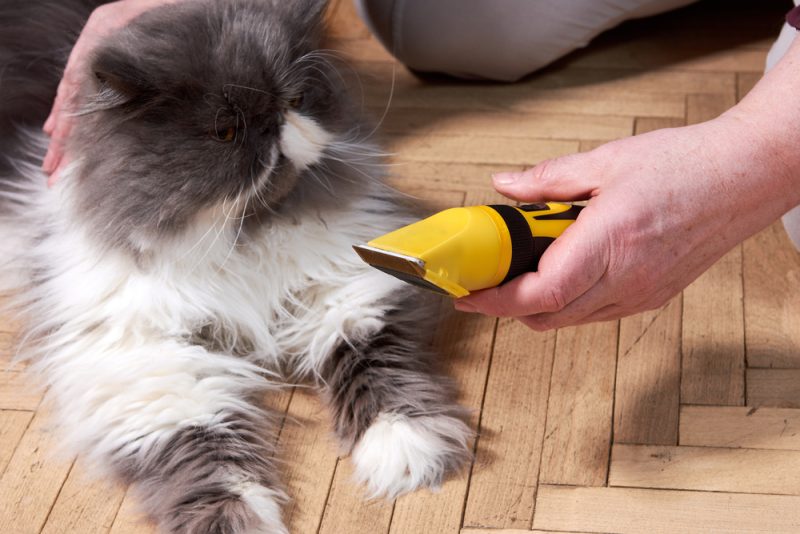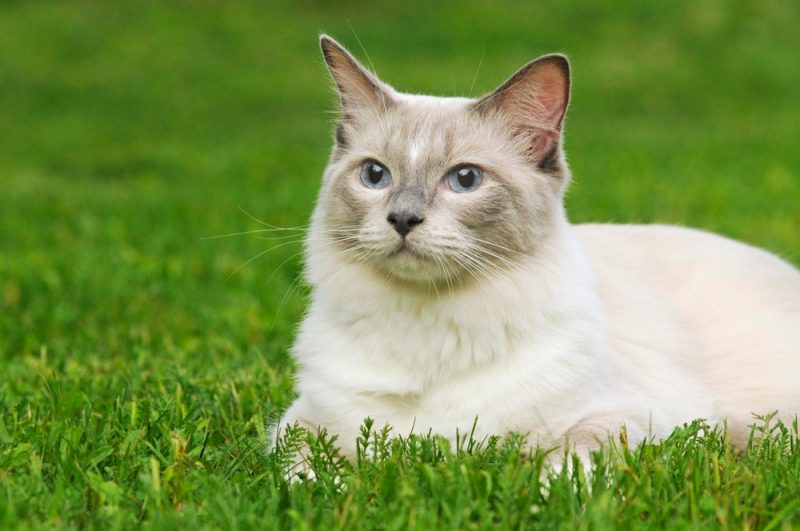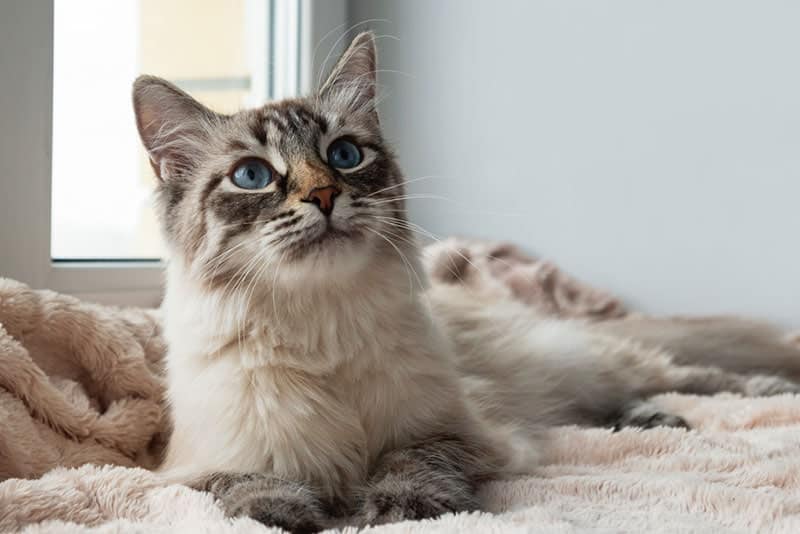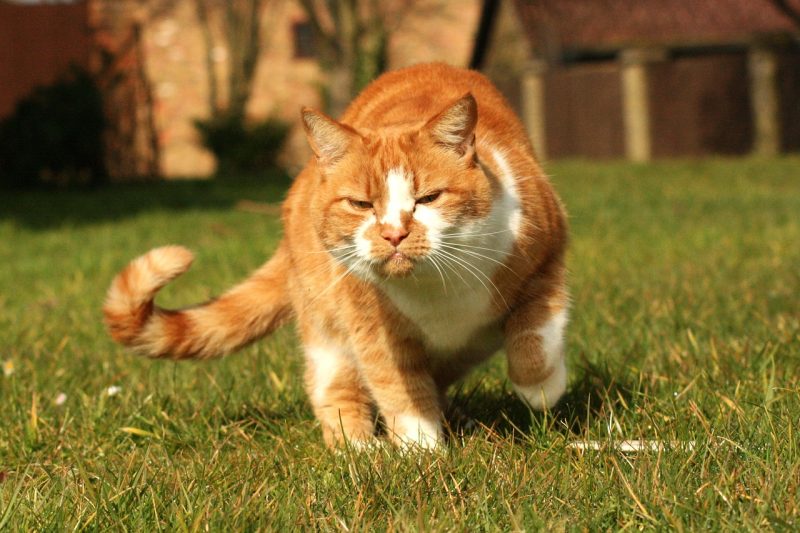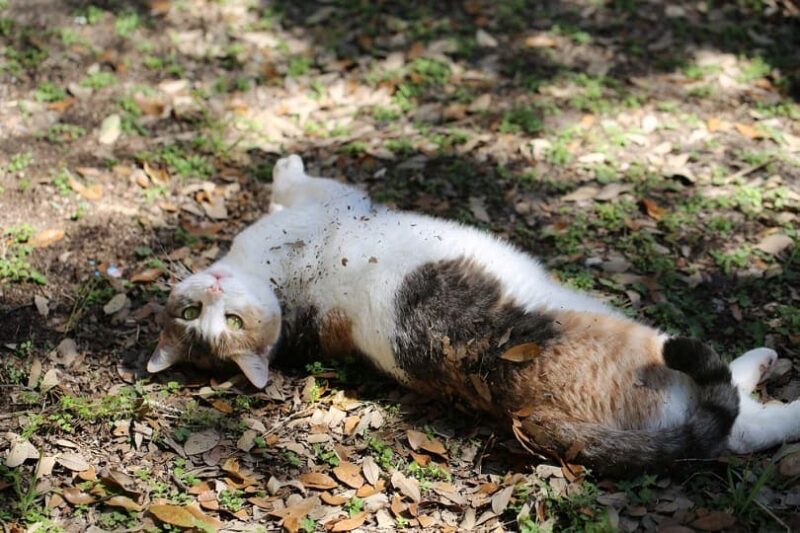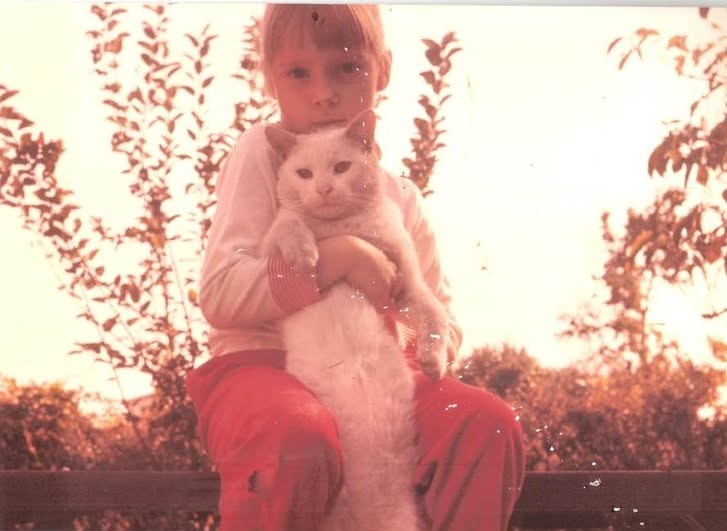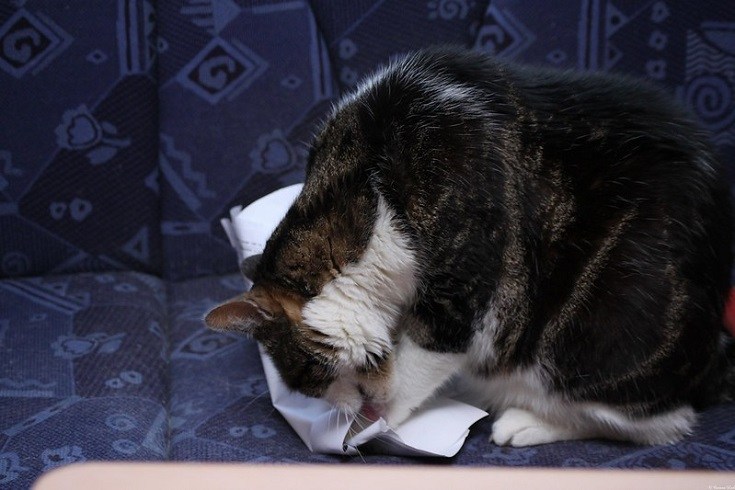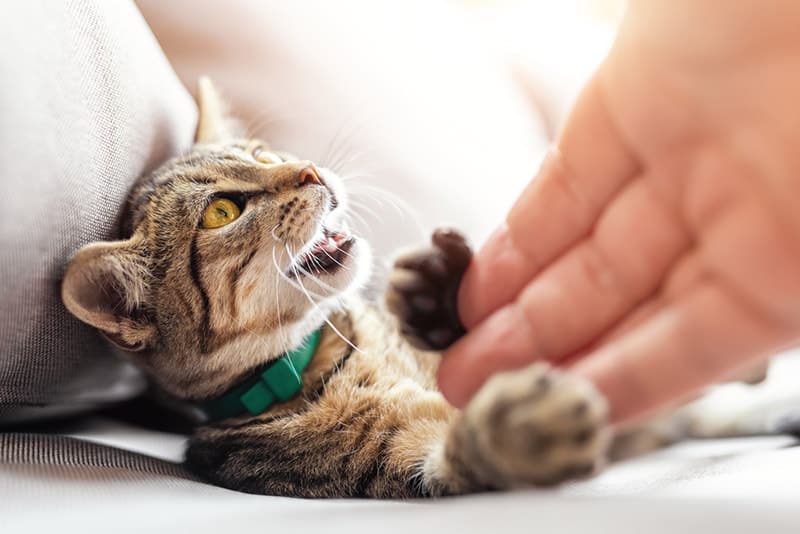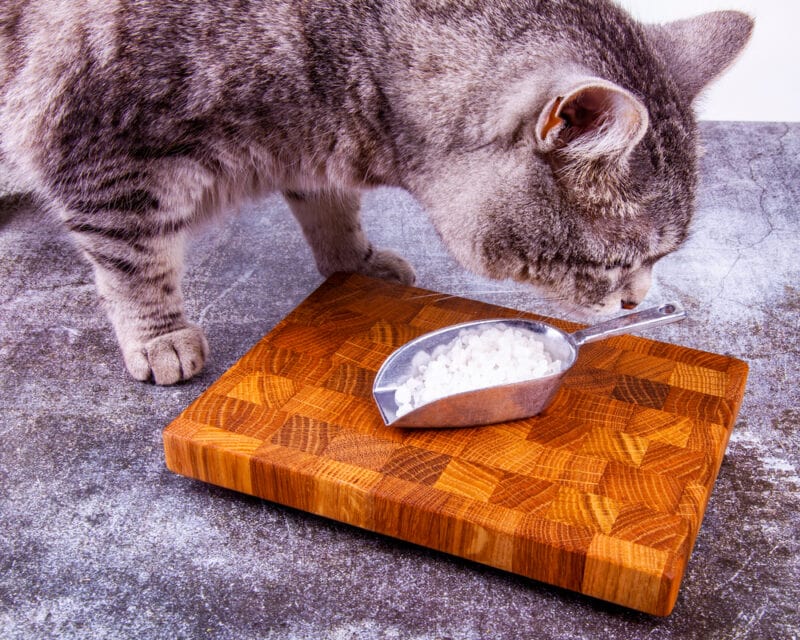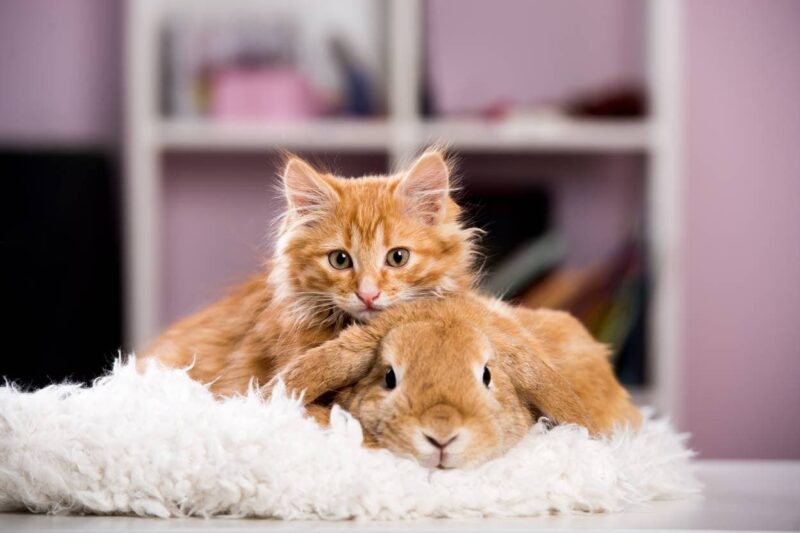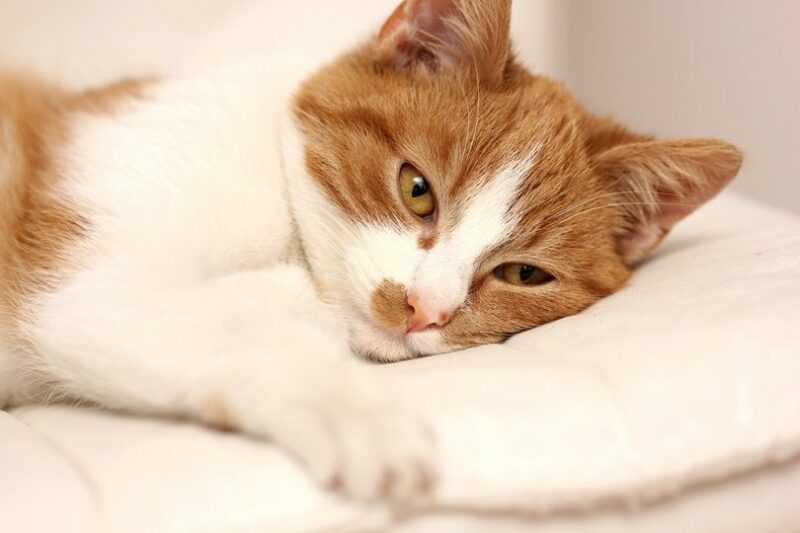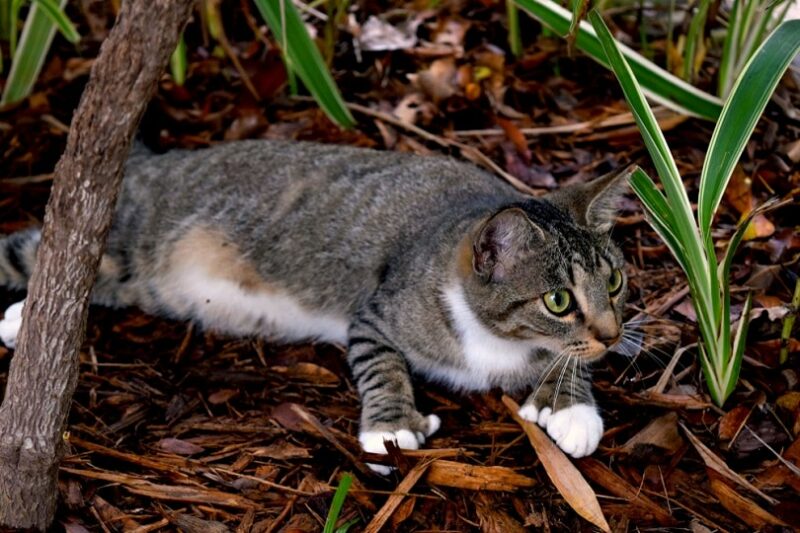In this article
View 3 More +If you have a cat, there is a good chance that they will need to be shaved at some point in their lives, whether it be for a surgical procedure like getting spayed or neutered, or to treat a wound. Many people also need to shave their long-haired cats if their fur has become too matted, or if they really suffer in hot weather. One thing that many people worry about when it comes to shaving their cat is razor burn, which we know can be quite uncomfortable for humans.
Unfortunately, cats can suffer from razor burns, even if the shaving is done carefully. Keep reading for why cats may get razor burn, what you can do about it, and how you can prevent it.

What Is Razor Burn?
Cat razor burn is a condition that occurs when a cat’s skin gets irritated or inflamed after their fur is shaved or trimmed. The signs of cat razor burn include redness, swelling, and itchiness of the affected area. Sometimes, these razor burns can start to disappear within a few hours, or it can take several days if the condition is more serious. In rare instances, the skin can become infected, and need antibiotics.
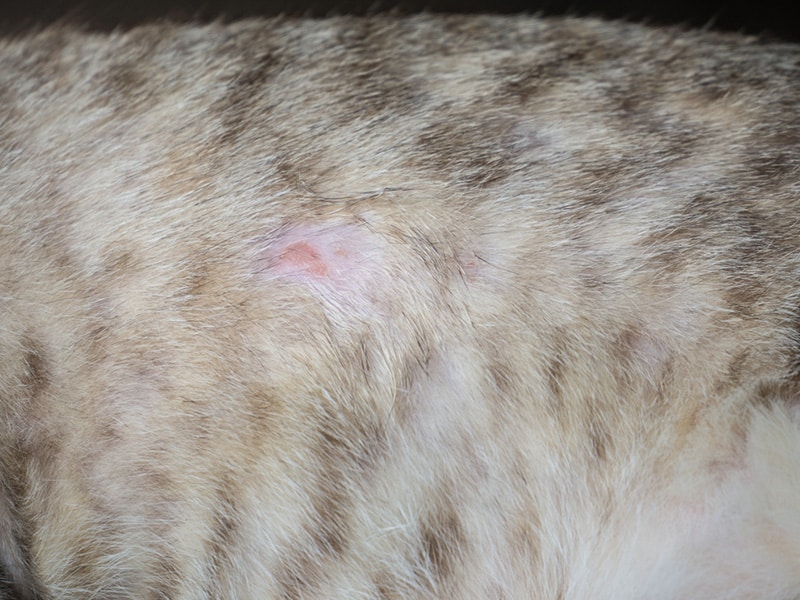
The 8 Reasons Cats Get Shaved
1. Matted Fur
Long-haired cats, such as Persians or Maine Coons, are prone to developing mats and tangles in their fur. These can be painful and difficult for the cat to remove on their own, and even combing can’t get through them. Shaving may be necessary to eliminate severe matting and prevent skin issues.
2. Medical Procedures
If your cat requires a medical procedure such as surgery or the placement of an intravenous line, shaving a specific area will be necessary in order to allow the area to be prepped sterilely. Veterinarians often shave small patches on the leg or neck for blood sampling.
3. Skin Conditions
Cats with certain skin conditions, such as dermatitis or fungal infections, may benefit from shaving. Removing the fur from the affected area allows for better access to topical treatments and promotes faster healing.
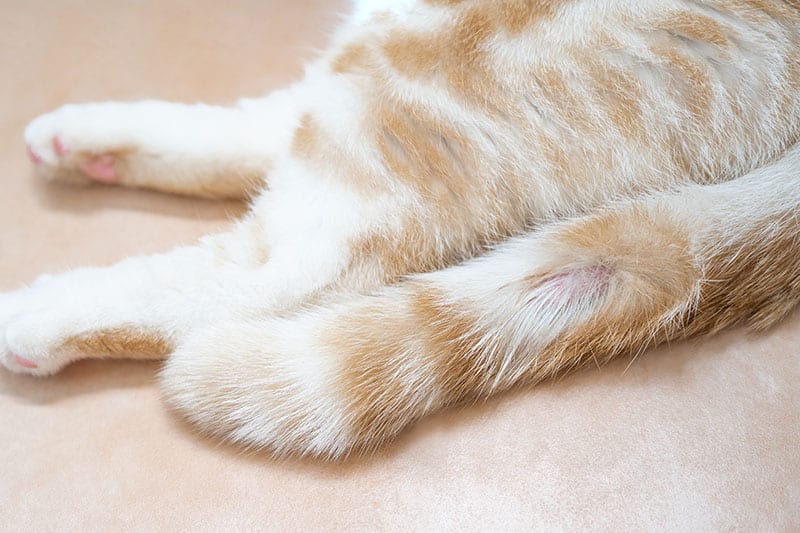
4. Parasite Infestations
In rare cases of severe flea or tick infestations, shaving can remove the pests and facilitate the application of anti-parasitic treatments. Cats and dogs affected by the paralysis tick, may need to be completely shaved to check for and remove all ticks.
5. Overheating
In extremely hot weather, cats with thick or long fur may struggle to stay cool. Shaving can help reduce their body temperature and prevent heat-related issues. However, it’s essential to consult with a veterinarian before shaving, as some cats’ fur acts as insulation and protects them from both heat and cold.
6. Allergies
Cats with allergies may experience skin reactions that lead to excessive itching, scratching, and licking. In some cases, shaving the affected area may be necessary to facilitate the application of medications and provide relief. This should only ever be done by, or under the direction of a vet.
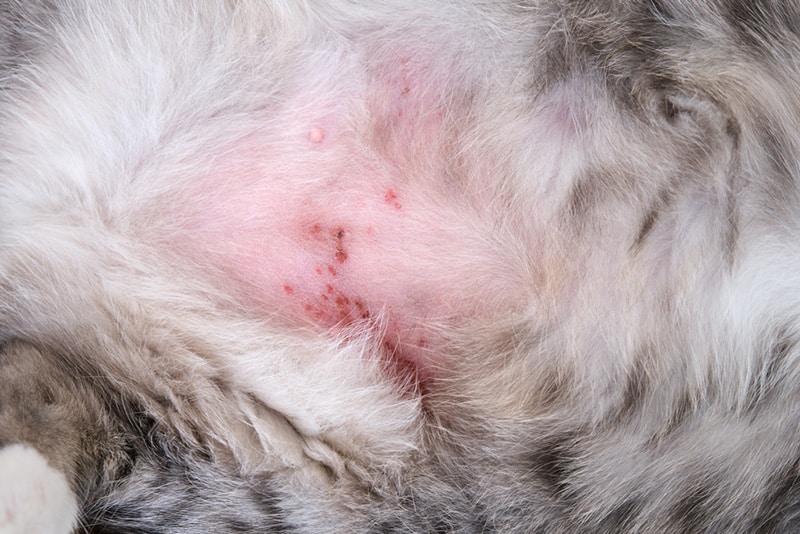
7. Hygiene Issues
Cats that have difficulty grooming themselves due to obesity, arthritis, or other health issues may develop hygiene-related problems. Shaving specific areas, such as around the hindquarters, can help maintain cleanliness and prevent skin infections.
8. Old Age
Senior cats may have difficulty grooming themselves adequately. Shaving can help prevent matting and reduce the risk of skin infections in older cats that may have mobility issues.

The 5 Ways You Can Help a Cat That Has Razor Burn Due to Being Shaved
1. Consult With a Veterinarian
Before attempting any home remedies, it’s crucial to consult with a veterinarian. They can assess the severity of the razor burn and provide specific guidance on how to address the issue to get your cat comfortable as fast as possible. The right approach will depend on whether the skin is broken, moist, or infected, and may not require treatment at all.
Do not clean the area unless instructed to by a vet, as some shampoos, or even moisture, could make the problem worse.
If you need to speak with a vet but can't get to one, head over to PangoVet. It's an online service where you can talk to a vet online and get the advice you need for your pet — all at an affordable price!

2. Avoid Further Grooming
Give your cat a break from grooming activities to enable the irritated skin to heal. Avoid brushing or combing the affected area until the razor burn subsides. This might involve using an Elizabethan collar (“cone of shame”) to allow the skin to settle.
3. Apply a Topical Soothing Agent
A veterinarian may recommend a cat-safe topical ointment or cream to soothe the razor burn. Apply it as directed, ensuring that the product is specifically designed for use on cats and does not contain any harmful ingredients.
4. Monitor for Signs of Infection
Keep a close eye on the shaved area for any signs of infection, such as increased redness, swelling, or discharge. If you notice these signs, contact a veterinarian promptly for further guidance.
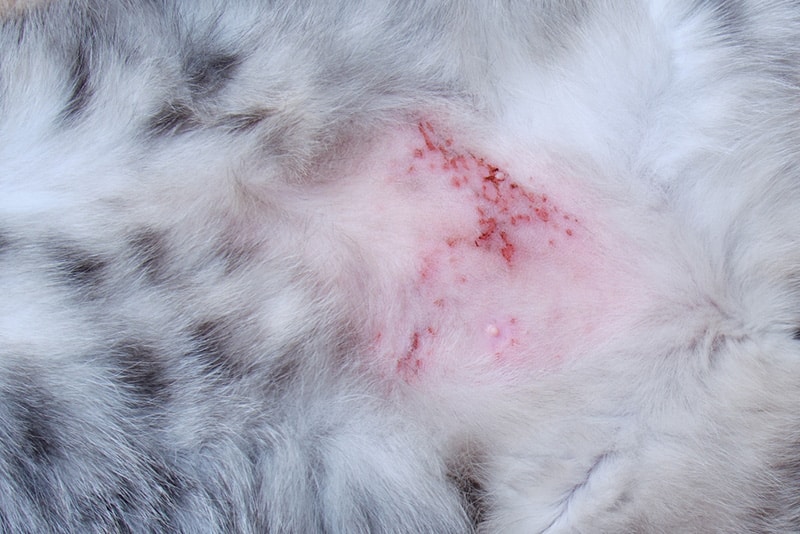
5. Follow the Veterinarian’s Recommendations
Follow any specific recommendations provided by a veterinarian. They may suggest additional treatments or adjustments based on your cat’s individual needs.

Frequently Asked Questions
Why Does The Vet Need To Shave My Cat?
For any surgical procedures or sampling, the skin must be as sterile as possible. This is much easier in humans, but the density of cats’ fur makes it very difficult to achieve a completely sterile field. By shaving the fur as close to the skin as possible, it minimizes the risk of contamination. Although this does risk causing razor burn, it is preferable to introducing infection into the body.
Can I Shave My Cat at Home?
While some cat owners may successfully groom their cats at home, most experts recommend using a professional grooming service. Cats have sensitive and fragile skin, and improper grooming techniques can lead to irritation and stress, and could even result in cuts and tears in the skin.
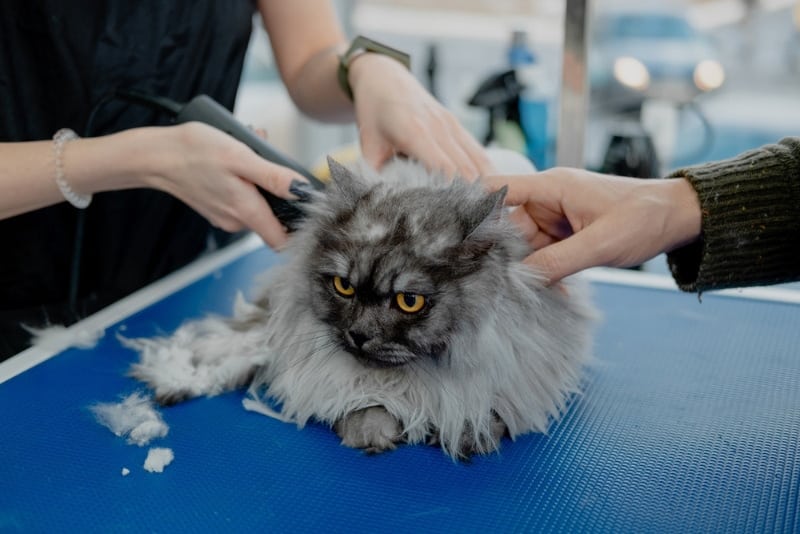
How Can I Reduce The Risks of Razor Burn?
If you are grooming your cat yourself, there are some basic rules that may help reduce the risks of causing razor burn.
- Only shave a calm cat. Struggling will only lead to stress and injury; both to you and your cat.
- Use sharp clippers that are designed for use on pets. Human clippers are not designed for the dense fur of cats and will become blunt and blocked quickly. If you are going to be shaving your cat regularly, you need high-quality clippers, so expect to pay at least $100. For most cat owners, it is much more cost-effective to take their cat to a groomer than to invest in a pair of clippers.
- Use the right type of clipper blades. Vets usually use a size 40 (0.25mm) blade for surgical preparation – this is far too short for grooming purposes. A size 10 (1.5mm) or size 7 (3.2mm) is good for getting under matted fur without leaving your cat too bald!
- Clip with the direction of hair growth, not against it.
- Check the clippers regularly – if you are doing a lot of shaving, the clipper blades can get quite warm, and this will contribute to clipper burn. If they feel warm to touch, you need to take a break.
How Long Does It Take for a Cat’s Fur to Grow Back After Shaving?
The rate of fur regrowth varies among cats and depends on factors like breed, age, and overall health. In general, it can take several weeks to a few months for a cat’s fur to grow back fully.
Are There Alternatives to Shaving for Managing a Cat’s Fur?
Regularly brushing and grooming, providing a balanced diet, and addressing underlying health issues are effective alternatives to shaving. Consult with a veterinarian to establish a grooming routine that meets your cat’s specific needs.
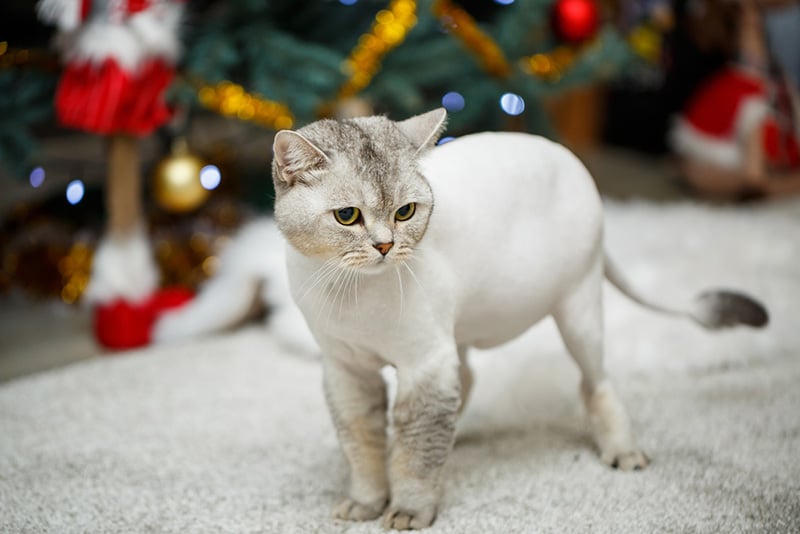
 Summary
Summary
Even if we are careful, cats can get razor burn. Of course, it will be far worse if the wrong tools or techniques are used. Mild razor burn will usually settle down within a day or two, but you may need to stop your cat from licking the area. In more severe cases, a vet may prescribe topical ointments or antibiotics if needed.
If you are worried that your cat might have razor burn, reach out to a vet, and be sure to keep a close eye out for signs of infection or discomfort.
See also:
- Australian Mist Cat Breed Info: Pictures, Temperament & Traits
- Chinchilla Cat: Pictures, Care, Traits & Info
Featured Image Credit: Akifyeva S, Shutterstock
